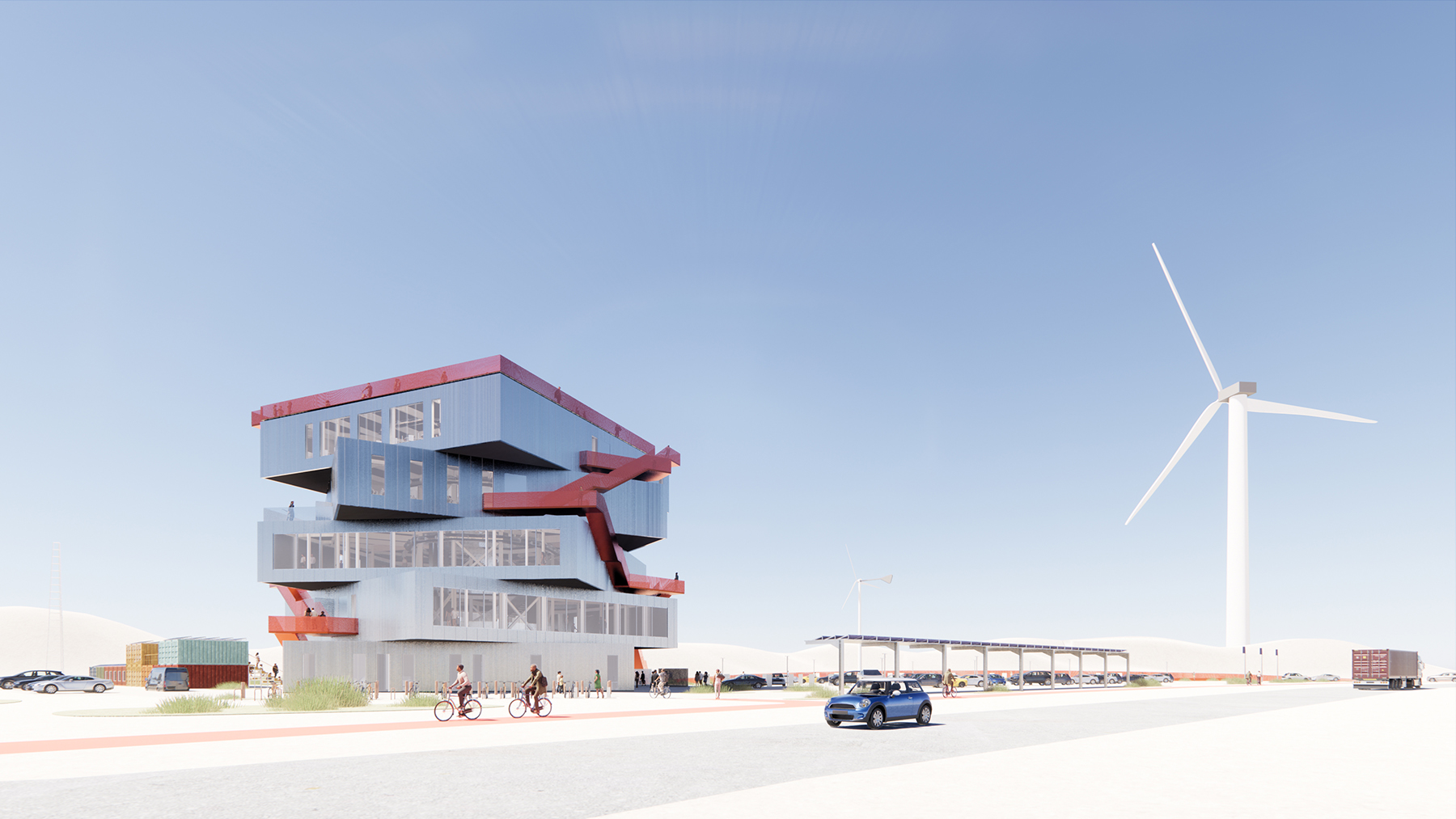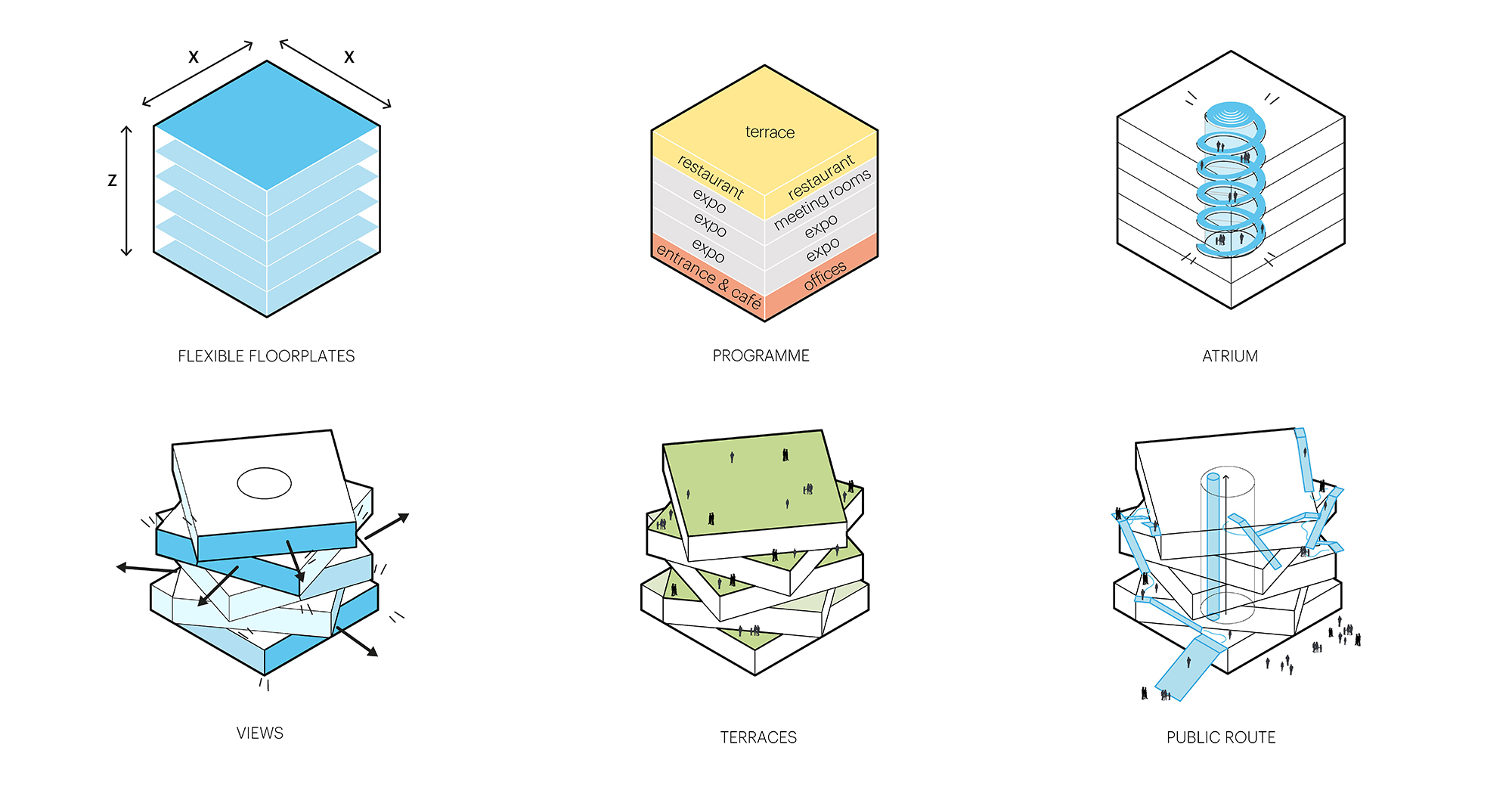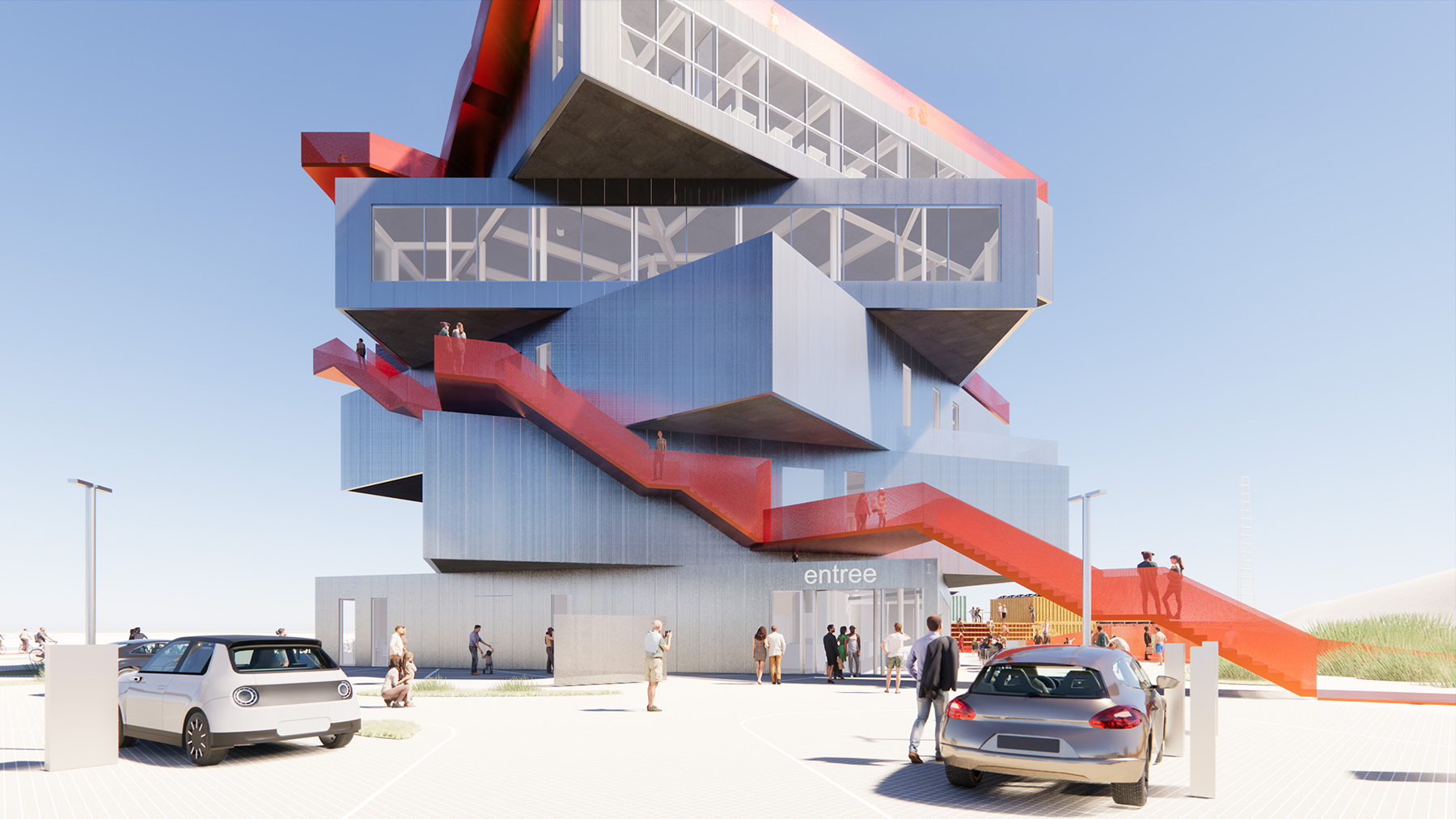By Robert L. Reid
The Netherlands’ Port of Rotterdam is set to be the home of a visitor center and exhibition space that will highlight the history, functions, and future of the harbor and its facilities, which are considered the largest in Europe. Scheduled to open in 2024, the Harbour Experience Centre will feature a terraced steel-framed structure consisting of square sections in plan, stacked five levels high and rotated around a central atrium.
Each cantilevering floor will offer large panoramic windows that provide views of the harbor operations, surrounding sand dunes, and North Sea.

The project is being designed by the Rotterdam-based architecture firm MVRDV and engineered by Van Rossum Raadgevende Ingenieurs, which is headquartered in Amsterdam and has a Rotterdam office. The geotechnical engineer is MOS Grondmechanica B.V., of Rotterdam, and the mechanical, electrical, and plumbing engineer is Nelissen Ingenieursbureau B.V., based in Eindhoven, Netherlands. Amsterdam-based Kossmanndejong is designing the exhibitions.
The Harbour Experience Centre is considered a successor to FutureLand, a temporary exhibit that opened in 2009. FutureLand turned out to be so popular, attracting more than 100,000 visitors a year, that the port’s leadership decided to create a permanent exhibit space that would provide information about the harbor for the general public, students, businesses, and other stakeholders, according to the Kossmanndejong website.
Reclaimed setting
Each level of the Harbour Experience Centre will measure 27 m by 27 m, with roughly 5 m long cantilevers at the corners of the floors. The overall structure will stand roughly 27 m tall, founded on a 1 m thick concrete foundation slab, says Niels Bartels, a Van Rossum structural engineer. There will be no basement or other underground spaces.
The site of the project is reclaimed land created between 2008 and 2013 as part of a project that extended the size of the harbor. The land is mostly flat with sand dunes and sandy soils that extend to a depth of 14.5 m below sea level.
Because there is the potential for settlement of between 35 mm and 60 mm, the structure will have to be as light as possible yet also stiff to resist the high wind loads along the coast, Bartels notes. Much of the steel framing will be exposed, he adds.
Within the square floor plans will be two circles of steel columns, each column extending up through all five levels of the building. In the center, a 9 m diameter atrium will feature columns spaced 4.1 m apart and connected by a steel ring beam. Columns are also located along an outer circle, at the perimeter of each floor.

Four main beams with cross-framing elements will extend from the ring beam to the corners of the floors. The framing system will also feature a series of vertical, X-shaped wind braces around the atrium to accommodate the wind loads with a static base value of 160 kg/sq m.
The composite floor systems will be designed to accommodate loads of 1,000 kg/sq m at the first and second levels (designated the ground floor and first floor in the design); the upper three floors will be able to accommodate loads of 500 kg/sq m, Bartels says.
Rising amenities
The facility’s ground floor will offer offices, a cafe, and exhibition space in the atrium. Within the atrium will be a kinetic sculpture, featuring moving elements and rising through all five levels of the building. The sculpture will be supported on a central column founded on a thicker section of the foundation slab, Bartels notes. The atrium will also include a model of the Rotterdam harbor, elevators, and a staircase to access the upper floors.

The first, second, and third floors will feature primarily exhibition space, while the fourth floor will host a restaurant and kitchen. The roof will be accessible to visitors and will feature a series of 266 solar panels secured to the main structure by a secondary steel frame, Bartels says.
Visitors will be able to access the roof internally and by a signature steel-framed staircase that will wrap around the exterior of the building, secured to the structure’s main steel framing, Bartels says.
In addition to the rooftop solar panels, the Harbour Experience Centre will generate its own electrical power by an adjoining windmill. Recycled materials will also be used. For example, the facade panels and acoustic ceilings will feature reused materials, including recycled paper pulp.



